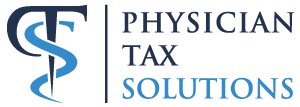$2.2 Trillion Coronavirus Stimulus Bill Passes the House – WHAT YOU NEED TO KNOW
PARTIAL HIGHLIGHTS OF CONGRESS’ $2.2 TRILLION VIRUS RELIEF PACKAGE
(As of Friday, March 27, 2020)
Here is a partial list of the highlights of a roughly $2.2 trillion package to rush aid to businesses, workers and a health care system slammed by the coronavirus pandemic. The package, approved by the Senate yesterday and today by the House, is expected to be signed by the President. We’ve highlighted several of the provisions that impact you as a physician and the medical profession.
— Loans and guarantees to businesses, state and local governments: $500 billion. Includes up to $50 billion for passenger airlines, $8 billion for cargo carriers, $17 billion for “businesses critical to maintaining national security.” Companies accepting loans may not repurchase outstanding stock; must maintain their employment levels as of March 13, 2020 “to the extent practicable”; and bar raises for two years to executives earning over $425,000 annually. Companies are not eligible for loans if top administration officials, members of Congress or their families have 20% control.
— Small businesses: Includes $350 billion in loans for companies with 500 employees or fewer, including nonprofits, self-employed people and hotel and restaurant chains with no more than 500 workers per location. Government provides eight weeks of cash assistance through loans to cover payroll, rent and other expenses, much of which would be forgiven if the company retains workers. Also $17 billion to help small businesses repay existing loans; $10 billion for grants up to $10,000 for small businesses to pay operating costs.
— Emergency unemployment insurance: $260 billion. Includes extra 13 weeks of coverage for people who have exhausted existing benefits. Also covers part-time, self-employed, gig economy workers. Weekly benefit increase of up to $600.
— Health care: $150 billion. Includes $100 billion for grants to hospitals, public and nonprofit health organizations and Medicare and Medicaid suppliers.
— Aid to state and local governments: $150 billion, with at least $1.5 billion for smallest states.
— Direct payments to people: One-time payments of $1,200 per adult, $2,400 per couple, $500 per child. Amounts begin phasing out at $75,000 for individuals, $150,000 per couple.
— Tax breaks: Temporarily waives penalties for virus-related early withdrawals and eases required minimum annual disbursements from some retirement accounts; increases deductions for charitable contributions. Employers who pay furloughed workers can get tax credits for some of those payments. Postpones business payments of payroll taxes until 2021 or 2022.
— Department of Homeland Security: $45 billion for a disaster relief fund to reimburse state and local governments for medical response, community services, other safety measures. Extends federal deadline for people getting driver’s licenses with enhanced security features, called REAL ID, from Oct. 1, 2020, to Sept. 30, 2021.
— Education: $31 billion. Includes $13.5 billion for states to distribute to local schools and programs, $14
billion to help universities and colleges.
— Coronavirus treatments: $27 billion for research and development of vaccines and treatments,
stockpiling medical supplies.
— Transportation: Includes $25 billion for public transit systems; $10 billion for publicly owned
commercial airports, intended to sustain 430,000 transit jobs; $1 billion for Amtrak.
— Veterans: $20 billion, including $16 billion for treating veterans at VA facilities; $3 billion for
temporary and mobile facilities.
— Food and agriculture: $15.5 billion for food stamps; $14 billion for supporting farm income and crop
prices; $9.5 billion for specific producers including specialty crops, dairy and livestock; $8.8 billion child
nutrition. Money for food banks, farmers’ markets.
— Defense: $10.5 billion for Defense Department, including $1.5 billion to nearly triple the 4,300 beds
currently in military hospitals; $1.4 billion for states to deploy up to 20,000 members of National Guard for
six months; $1 billion under Defense Production Act to help private industry boost production of medical
gear. Money cannot be used to build President Donald Trump’s proposed wall along Mexican border.
— Social programs: Includes $3.5 billion in grants for child care and early education programs; $1 billion
in grants to help communities address local economic problems; $900 million in heating, cooling aid for
low-income families; $750 million for extra staffing for Head Start programs.
— Economic aid to communities: $5 billion in Community Development Block Grants to help state and
local governments expand health facilities, child care centers, food banks and senior services; $4 billion in
assistance for homeless people; $3 billion for low-income renters; $1.5 billion to help communities rebuild
local industries including tourism, industry supply chains, business loans; $300 million for fishing industry.
— Native American communities: $2 billion for health care, equipment schools and other needs.
— Diplomacy: $1.1 billion, including $324 million to evacuate Americans and diplomats overseas; $350
million to help refugees; $258 million in international disaster aid; $88 million for the Peace Corps to
evacuate its volunteers abroad.
— Elections: $400 million to help states prepare for 2020 elections with steps including expanded vote by
mail, additional polling locations.
— Arts: $150 million for federal grants to state and local arts and humanities programs; $75 million for
Corporation for Public Broadcasting; $25 million for Washington, D.C., Kennedy Center for the Performing
Arts.
— Congress: $93 million, including $25 million for the House and $10 million for the smaller Senate for
teleworking and other costs; $25 million for cleaning the Capitol and congressional office buildings.
1 We compiled this list from information available to AP News from summaries of the legislative texts provided by
various Senate Republications and Democrats, so the actual language may change upon being signed into law.
This post serves solely for informational purposes and should not be construed as legal, business, or tax advice. Individuals should seek guidance from their attorney, business advisor, or tax advisor regarding the matters discussed herein. Physiciantaxsolutions assumes no responsibility for actions taken based on the information provided in this post.
